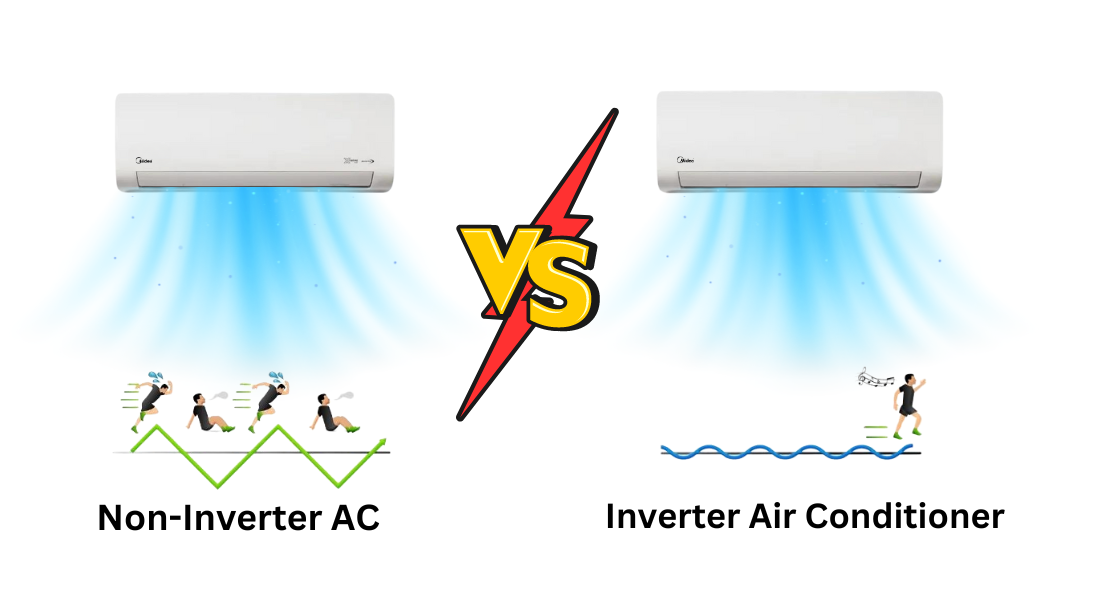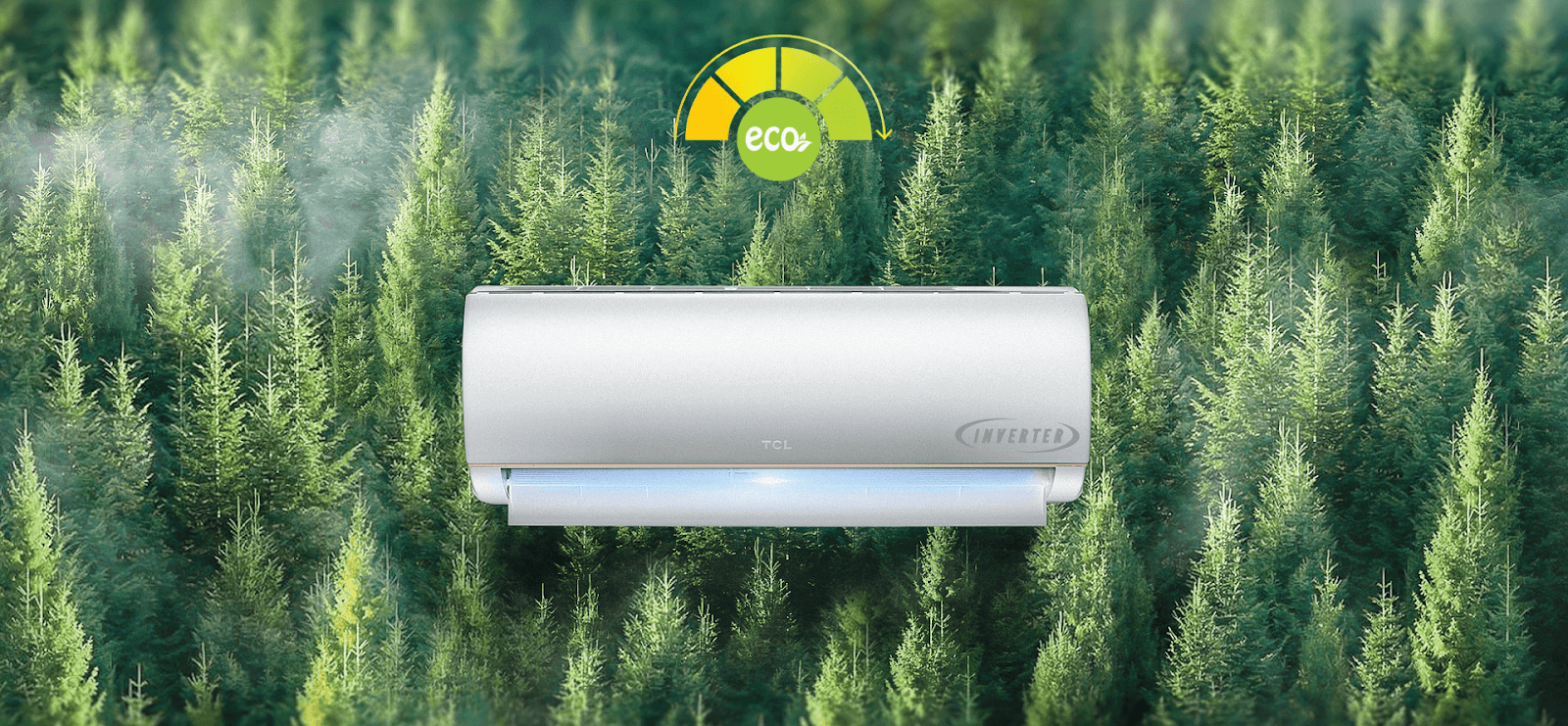Inverter vs Non-Inverter AC
Published on 2021-09-18
When it comes to selecting an air conditioner for your home, one of the key decisions you'll need to make is whether to go for an inverter AC or a non-inverter AC. Understanding the differences between these two types can help you make an informed choice.

Inverter air conditioners are equipped with a DC compressor that varies its speed to adjust the cooling output according to the room's temperature requirements and load conditions. Initially, the compressor runs at full capacity, for example, at 1200 watts, to quickly bring the room to the desired temperature. Once this temperature is achieved, the compressor reduces its speed, operating at lower power levels such as 300, 400, or 500 watts, to maintain the temperature efficiently. This lower power operation minimizes energy consumption and maintains a consistent temperature without the frequent on-off cycles of non-inverter ACs. If there is a sudden increase in load, such as someone opening a window and letting in warm air, the inverter AC detects this change and increases the compressor speed to quickly restore the desired temperature. The real-time adjustment of compressor speed ensures that the room temperature remains stable at the set point, providing better temperature control, enhanced energy efficiency, and improved comfort.

| Inverter AC | Non Inverter AC |
| 1. It's compressor's motor is brushless DC type. | 1. It's compressor's motor is AC induction type. |
| 2. The speed of compressor varies as per cooling/heating load. | 2. It's compressor speed is constant. |
| 3. Quite and smooth operation. | 3. A little bit nosier operation. |
| 4. It can maintain constant temperature inside room. | 4. Inside room temperature differential is 2°C to 4°C. |
| 5. The main advantage of DC Inverter AC is less electricity consumption as compared to normal AC. | 5. Non-Inverter AC consume little high electricity as compared to Inverter AC. |
| 5. Price of inverter AC is around 30% to 35% costly compared to non inverter AC. | 5. Price of non inverter AC is around 30% to 35% less costly compared to inverter AC. |
| 6. As per high cost of products it's spare parts is also little costly. So maintenance cost will be higher. | 6. As per lower cost of products it's spare parts is also cheaper. So maintenance cost will be low. |
| 7. Advance skilled technician required to repair inverter AC. | 7. Skilled technician required to repair inverter AC. |
| 8. It can run even at low voltage. | 8. It needs proper voltage to run. |
Non-inverter air conditioners run at full capacity, consuming maximum electricity. The compressor stops when the set temperature is reached, and only the fan operates. When the temperature rises, the compressor restarts, running at full speed until the desired temperature is reached. This cycle of starting and stopping continues to maintain the room's temperature. However, this operation is more energy-efficient than inverter ACs, leading to higher electricity bills due to the power consumed during each compressor start-up.
For short-term use, non-inverter ACs, also known as "on-off" or "fixed speed" ACs, can be cost-effective. They quickly cool the room by running the compressor at full capacity and generally have a lower initial cost than inverter ACs, making them a budget-friendly choice for infrequent use.
For more information on AC options, features, and expert advice, visit our website acghar.com. Our team is dedicated to helping you find the perfect air conditioner to suit your needs and preferences.
























